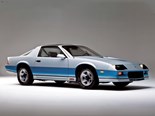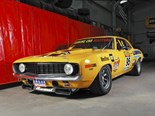1967-70 Chevrolet Camaro: Buyer's Guide













|

|

|

|

|

|
You don't have to sell the house to own a muscle car. Join us as we have a squiz at the mighty Camaro.
1967-1970 Chevrolet Camaro
To say Chevrolet was badly wrong-footed by Ford’s introduction of the Mustang is a gross understatement. Frankly, it was left gasping. That instant success was the dominant topic of conversation in every rival design department across the country, according to the people who were there at the time. Perhaps the best anecdote comes from Gary Witzenburg, then a junior Chevrolet engineer, in the foreword of his book on the Camaro.
"It was mid-summer, 1964. Ford’s Mustang had opened in April to rave reviews and was standing room only in the sale charts. It was the hottest subject in Chevrolet Engineering, where I was working prior to my senior year in college.
"Would it continue to thrive or ultimately fizzle? Was it any good as a sporting car or just a rebodied Falcon? Would Chevrolet have something to go up against it? How soon?
"I attended a meeting where Design Vice-President Bill Mitchell was one of the key speakers. ‘When will Chevy have an answer to the Mustang?’ he was asked. ‘We already have,’ Mitchell bellowed, ‘It’s called the Corvair.’"
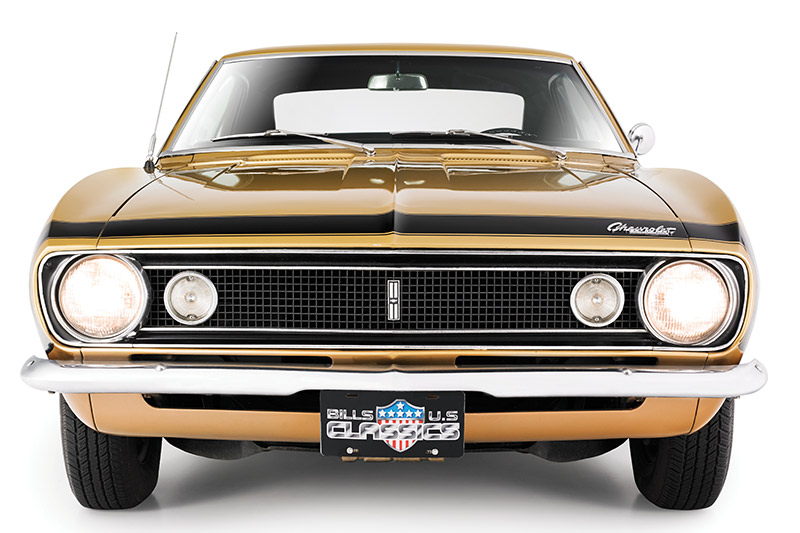
Oh dear. That didn’t end well. Even the turbocharged version of the rear-engined Corvair six, called the Monza, failed to hold back the tide. Of course Ralph Nader’s famous tagging of the Corvair range as ‘unsafe at any speed’ didn’t help.
It took until Autumn 1966 for the Camaro – Chevrolet’s ‘proper’ answer to the Mustang – to be be revealed for the 1967 sales year.
Ford’s head start in the muscle car playground gave it a huge advantage, and meant the Camaro had a lot of catching up to do, so changes and upgrades came thick and fast for a while there.
Right from the start, Chevrolet was keen not to miss out on any market niche that just might get its chequebook out. To that end the 1967 range included a wealth of variants including the Sport Coupe, the convertible and SS-350. You quickly understand what was at stake when you look at the numbers – over 201,000 1967 models were sold, still less than half the number of Mustangs for the same year.

In some ways history hasn’t changed much. Mustangs still dominate the pony car market, though good Camaros are a very solid second, according to the owner of this car, Bill of Bill’s US Classics, a dealership in Melbourne’s south-east.
What we like about this example is its originality. We’re told its one (female) owner until now had it resprayed in its original colurs at some stage, with the addition of an SS-style nose cone stripe, but that’s it.
It’s a good representation of the marque. The gold colour scheme is right for the time, as is the spec. It’s got the L30 version of the 327 V8 in the nose, which means it’s the 275 horsepower unit. That was the best you could get unless you upgraded to the 350 in the SS, and considerably more punchy than the 2-barrel 327 which claimed 210 horses.
Backing that up is the two-speed Powerglide auto – not the greatest thing for straight line performance, but perfect for a cruiser that’s got heaps of power anyway.
Someone ticked the box for power steering on this car, but not air-conditioning, while brakes are the stock drums all round. Bill reckons that’s the one area he’d upgrade if he planned to keep the Camaro – there are plenty of resources out there to do it quickly at a reasonable price.

This example carries a sticker price of $46,900 – which stacks up well against the cost of doing one up to this standard. You might swap out the red heater hoses in the engine bay for black, but really you’d be tempted to leave well alone.
What’s it like to drive? "Like a Kingswood!" is Bill’s wry comment, albeit a Kingswood with a fair bit more grunt than usual. What you have to keep in mind is there’s no escaping this is a sixties car and, once you accept that, along with its limitations, you’ll have a ball.
As with the Barracuda, tracking down the originality or otherwise of a first-gen Camaro can take a bit of doing, as there were myriad variations. For a start, engine options were a choice of two in-line sixes and and six V8s all the way up to a 427.
From there you could have the Powerglide transmission or a choice of a three or four-speed manual. Then there was optional power steering, air, cruise control power brakes, front discs, limited slip diff, adjustable steering column, Unlike all too many of its competitors in the day, the Camaro name has survived. There have of course been several generations of the car over time, and it did take a little ‘rest’ from 2002 to 2009. That’s when the existing plant was shut down, in response to a downturn in demand.
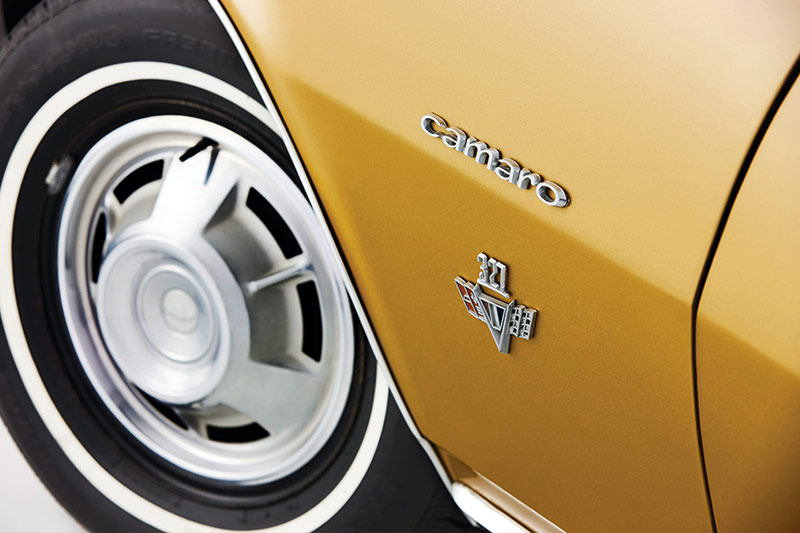
The current sixth generation went on sale in late 2015 for the 2016 model year and, like the first generation, you can order it in six and eight-cylinder form.
As for the original series, you can’t help thinking they’re well worth preserving as they mark a significant time in both the history of Chevrolet and the pony car phenomenon overall.
VALUE GUIDE
Chevrolet Camaro SS350 coupe
FAIR: $20,000
GOOD: $42,000
EXCELLENT: $55,000
Note: concours cars may demand more
CAMARO MARKET GUIDE
- Cliff Chambers
Despite giving Ford’s Mustang almost three years’ start in their sales race, Chevrolet’s ‘pony’ car did a mighty job of reeling in the runaway Ford and today is the more desirable, and generally more valuable, model on the collector market.
First-generation Camaros are easy to find in Australia, with available vehicles divided between RHD conversions and those that have kept their steering wheel adjacent to the gutter.
The majority on offer of late looked to be in good condition; mostly with a degree of mechanical or cosmetic modification. At the lower end of the market this isn’t going to have a huge influence, however any alteration from stock - including RHD conversion - to a Z28 or big-block RS/SS will hurt values as the years roll by.
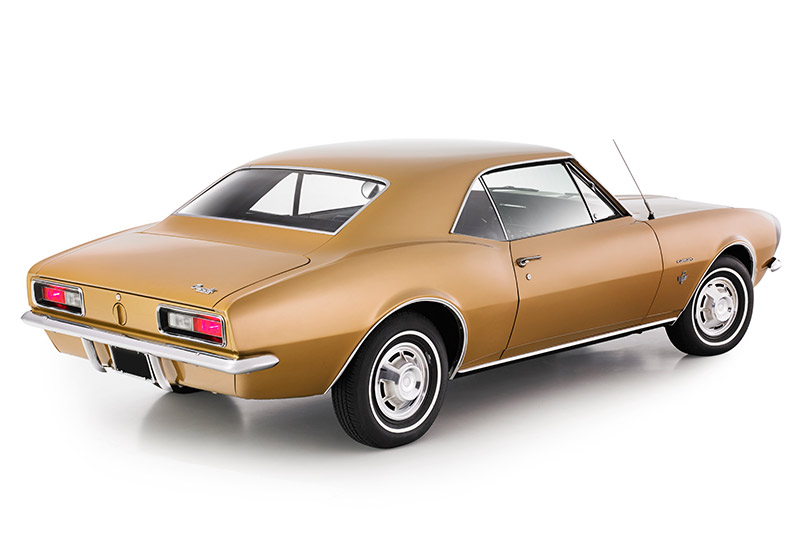
Among the small-block – 327 or 350 cubic inch cars – the SS will normally generate slightly more money than a base model and less than the RS. Convertibles are less expensive than might be expected but good cars can be found for $60,000.
Where heavyweight asking prices come to the fore is in the market for soft-top cars – especially big blocks – or a verified Z28. Both versions will regularly exceed A$100,000.
CAMARO BUYER'S CHECKLIST
Body & Chassis
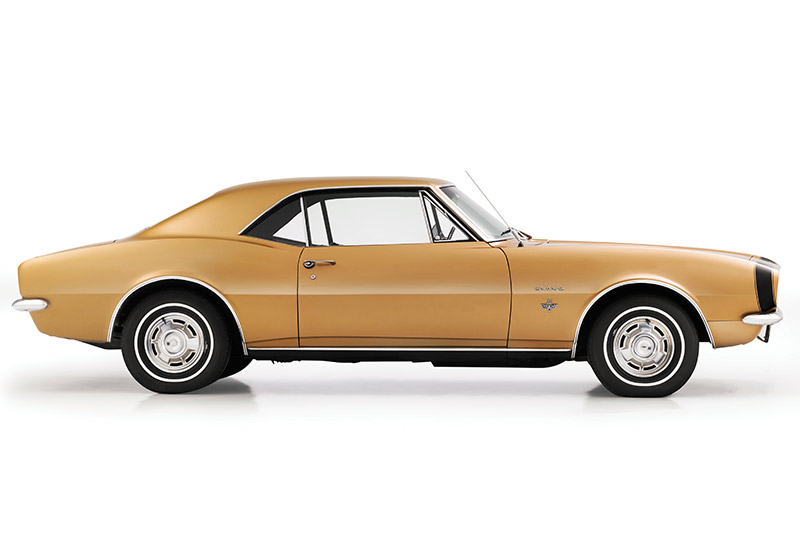
It is often said that there are so many companies in the business of supplying Camaro body panels because so many Camaros need panels replaced. Should you choose a neglected car, perhaps from the snow belt of the USA, that could be true, but one that has been restored or spent time in Australia should have minimal issues. Sub-frame mounts and rear spring attachment points are critical and extensive rust in the floors, rear quarters and front mudguard mounting points will be costly to repair. Headlight covers as used on RS models are prone to jamming. Faulty limit switches, bad earths or the door mechanism itself have been blamed. Test the lights several times before settling on a car to buy.
ENGINE & TRANSMISSION
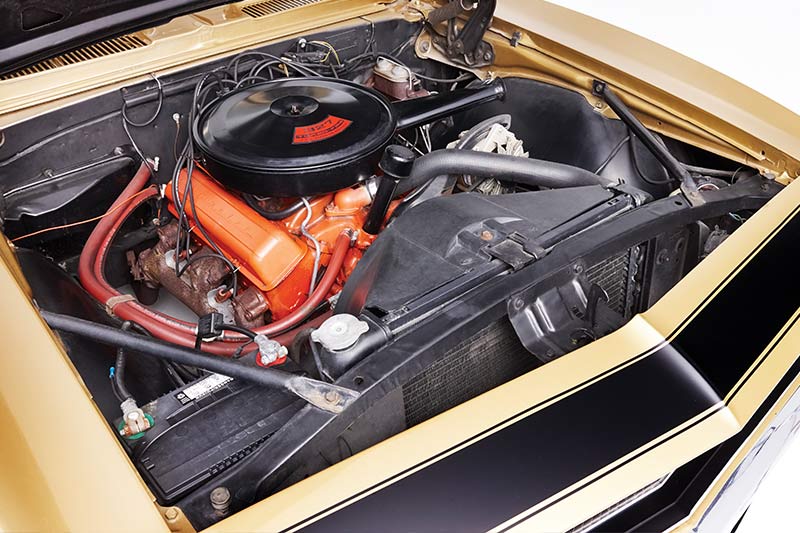
Early six-pot Camaros are rare here so we’ll concentrate on the more prolific V8s. Happily the news is pretty good regarding durability, parts scarcity annd ease of maintenance. Properly serviced, a 327/350 small-block will run for 300,000+ kms before needing a rebuild. Neglected engines with clogged water passages and radiators and a tired water pump will overheat so, unless recently done, budget for a cooling system overhaul. Oil leaks are common but rarely severe. Two-speed Powerglide automatics are common; they’re strong, simple ‘boxes good for straight-line acceleration. Fourspeed manual cars
are quite scarce in Australia but also very easily repaired or replaced.
SUSPENSION & BRAKES
The first Camaros came with a radical ‘monoleaf’ rear suspension. Problems included axle hop and springs snapping, prompting adoption of multi-leaves before 1969. Later springs and staggered shockabsorber mountings can be adapted but if you’re looking at V8 Camaros best to get one that’s already had the money spent. Front suspension woes are mainly confined to sagging springs and disintegrating rubber bushings. Most V8s will have been converted to disc front brakes, if not kits of parts range in price from $800 to around $2000 so consult a brake specialist to determine what you need before sealing the deal on an all-drum car.
INTERIOR & ELECTRICAL
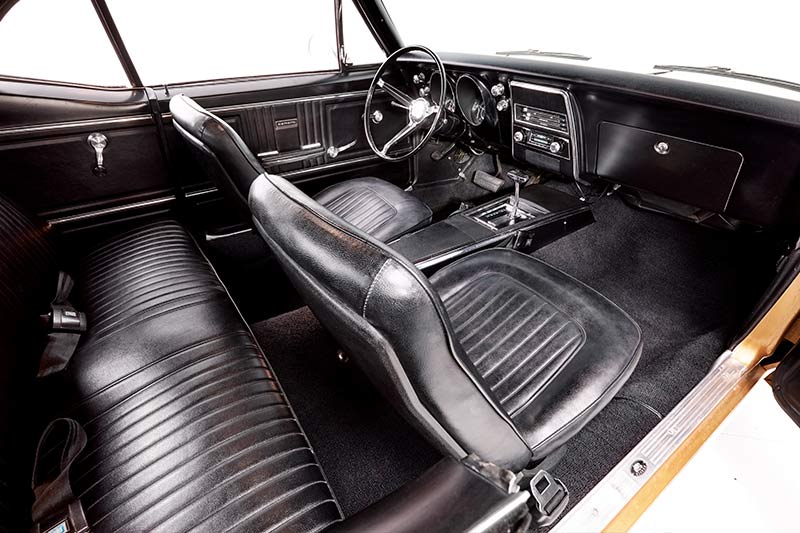
Early Camaro seats are plain, pretty flat and not especially comfortable. Add to that 50 years of use and any seat that hasn’t been rebuilt or replaced will need to be. New foam and covers are available but best to check out prices here as well as overseas due to freight charges on imported parts. Seat backs can twist and locking mechanisms fail. Check window winders as the mechanism can bind through lack of use. Electrical issues are rare because these cars generally lack the power windows, seats and even airconditioning common in larger US products. Be very wary of convertible tops that creak or shudder
when being opened or closed.
SPECIFICATIONS
1967-1970 Chevrolet Camaro
NUMBER BUILT: 220,906 (1967)
BODY: integrated body/chassis two-door coupe & convertible
ENGINE: 3768 or 4093cc in-line six-cylinder, 4942, 5354, 5733 or 6489cc V8 with overhead valves & single downdraft carburettor
POWER & TORQUE:
220kW @ 4800rpm, 515Nm @ 3200rpm (350 4bbl)
PERFORMANCE: 0-100km/h: 7.6 seconds, 0-400 metres 15.5 seconds (350 auto)
TRANSMISSION: 3 or 4-speed manual, 2 or 3-speed automatic
SUSPENSION: Independent with coil springs, wishbones, telescopic shock absorbers &
anti-roll bar (f); live axle with semi-elliptic springs & telescopic shock absorbers (r)
BRAKES: Drum or disc (f) drum (r) with power assistance
TYRES: D70-14 crossply
Unique Cars magazine Value Guides
Sell your car for free right here
Get your monthly fix of news, reviews and stories on the greatest cars and minds in the automotive world.
Subscribe

.jpg)











